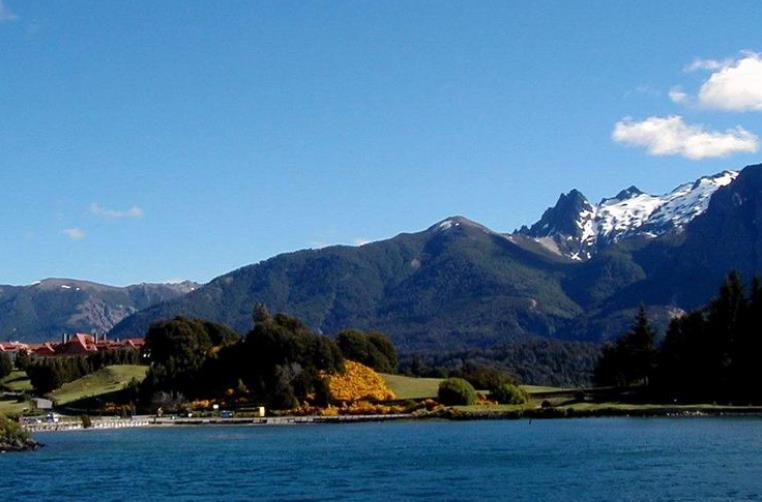本文是历史专业Essay范例,题目是“How The White Australia Policy Shaped Australia History Essay(白澳政策如何影响澳大利亚历史论文)”,历史上,移民在澳大利亚起着重要的作用。白澳政策(WAP)及其最终的废除,在二十世纪的澳大利亚塑造过程中发挥了重要作用。“白澳政策”描述了澳大利亚从联邦到20世纪后期对移民的偏见态度。澳大利亚政府在25年的时间里逐渐废除了这一政策,直到1973年它被完全废除。这项政策的实施有几个原因,比如种族主义、对入侵的恐惧以及如果允许移民,生活水平会下降的担忧。作为WAP的结果,澳大利亚有效地将自己与亚洲近邻隔离开来。然而,政策被许多国家视为种族主义者,导致澳大利亚社会被剥夺了社会效益和经济效益的文化多元化和强劲的经济发展的链接现在被视为亚洲和次大陆的经济实力的房子。随着移民政策的废除,澳大利亚迎来了大量移民和新文化的涌入。今天,澳大利亚认为自己是一个多元文化的国家,但种族主义和WAP的蛛丝马迹仍然存在。
Historically, immigration plays a major role in Australia. The White Australia Policy (WAP), and its eventual repeal, played a significant role in shaping Australia in the twentieth century. The White Australia Policy describes Australia’s prejudiced approach to immigration, from federation until the late twentieth century. The Australian government gradually dismantled the policy, over a twenty-five year period, until it was completely removed in 1973. The policy was put into place for several reasons, such as racism, fear of invasion and concerns that the standard of living would decline if immigration was allowed. As a result of the WAP, Australia effectively insulated itself from its close Asian neighbours. However, the policy was seen as racist by many countries and resulted in Australian society being deprived of the social and economic benefits of cultural diversification and the development of strong economic links to what is now seen as the economic power house of Asia and the sub-continent. Following the dismantling of the policy, Australia received a large influx of immigrants, and new culture. Today, Australia considers itself to be a multicultural country, but hints of racism and the WAP are still present.

The Immigration Restriction Act (1901) was one of the first pieces of legislation passed by the Australian government following federation. This act was designed to ‘place certain restrictions on immigration and to provide for the removal from the Commonwealth of prohibited immigrants.’ [1] One significant aspect of the Act was a dictation test, which was used to exclude unwanted immigrants. As part of this, immigrants were required to take a written test in one of a variety of languages, of which they usually had no prior knowledge. The Immigration Restriction Act became the cornerstone of the WAP, and in 1919, Prime Minister Billy Hughes declared it ‘the greatest thing we have achieved.’ [2]
《Immigration Restriction Act》(1901)是澳大利亚政府继联邦之后通过的第一部法律。该法案旨在对移民施加某些限制,并规定被禁止的移民可以离开英联邦。该法案的一个重要方面是听写测试,它被用来排除不受欢迎的移民。作为这项计划的一部分,移民们被要求参加一项用各种语言中的一种进行的笔试,而他们通常对这些语言一无所知。《Immigration Restriction Act》(Immigration Restriction Act)成为WAP的基石,1919年,英国首相比利·休斯(Billy Hughes)宣布该法案是“我们所取得的最伟大的成就”。”
Attempts to keep Australia white started to fail around the time of World War II (WWII). During the war, large numbers of non-white refugees sought shelter in Australia. Most left voluntarily once the war ended, but some wanted to stay. Despite this, the immigration minister, Arthur Calwell had them deported. In 1949, however, Minister Holt allowed 800 non-European refugees, as well as Japanese war brides, to stay in Australia. [3] With this introduction of new people and culture, the landscape of the Australian population began to slowly change. This was Australia’s first move towards a fair-minded immigration policy. The next was when non-Europeans with 15 years residence were allowed to become permanent Australian citizens, in 1957. [4] The revised Migration Act of 1958 put an end to dictation tests, and involved a straightforward permit system. This revised Act allowed ‘distinguished’ Asians the opportunity to immigrate. [5]
试图让澳大利亚保持白人身份的努力在二战前后开始失败。战争期间,大批非白人难民到澳大利亚寻求庇护。战争结束后,大多数人自愿离开,但也有一些人想留下来。尽管如此,移民部长Arthur Calwell还是将他们驱逐出境。然而,在1949年,霍尔特部长允许800名非欧洲难民和日本战时新娘留在澳大利亚。[3]随着新的人和文化的引入,澳大利亚人口的面貌开始慢慢改变。这是澳大利亚迈向公平移民政策的第一步。第二次是1957年,居住15年的非欧洲人被允许成为澳大利亚永久公民。1958年修订的《移民法案》结束了听写考试,并引入了一个简单的许可证制度。修订后的法案允许“杰出的”亚洲人有机会移民。
In 1966, it was declared that all races would be considered for immigration on the basis of their suitability, qualifications and ability to integrate readily. [6] This announcement was the turning point in abolishing the WAP, and non-European migration began to increase. In 1973, the Whitlam government introduced a policy prohibiting discrimination based on race. All migrants could now be eligible to citizenship after two and a half years of permanent residence. [7] The government also decided to sanction all international agreements involving immigration and race. In 1978, the government commissioned a review of immigration in Australia, and several new policies were introduced to encourage Australian population growth. [8]
1966年,宣布将根据各种族的适宜性、资格和易于融入社会的能力考虑其移民问题。这一宣布是废除WAP的转折点,非欧洲移民开始增加。1973年,惠特拉姆政府出台了一项禁止种族歧视的政策。所有移民现在都可以在永久居住两年半后获得公民身份。他还决定批准所有涉及移民和种族问题的国际协议。1978年,政府委托对澳大利亚的移民进行审查,并出台了几项鼓励澳大利亚人口增长的新政策。
The initial purpose of the WAP was to create an ethnically homogenous society, and to rebuild a ‘British’ nation in the South Pacific. [9] However, there was also a very racist side to the policy. The policy-makers hoped to keep Australia from being “contaminated” by non-European immigrants, especially Asians, who it was suspected, would do bad, “foreign” things (see Image 1, in Appendix). Ignorance was a key aspect of the WAP. Australians had no real understanding of other races, except that they were ‘different’. This ignorance led to fear and mistrust. It was also feared that immigrants would take all available jobs, by accepting lower wages. A song written by Collins in the early twentieth century shows the fears and prejudice of the Australian people:
“They want cheap labor there is no doubt, for profit is their game; and if you fail to do what’s right, you’ll have yourselves to blame. So you who understand those things, go forth and spread the light – This is a land worth keeping free, do keep Australia White.” [10]
A traditional objection to non-European immigration was that it would bring into Australia people of lower educational and living standards, which, in turn, would lower overall working and living conditions. However, the basis for this belief is entirely fictitious, as in the past, these immigrants have had higher qualifications than the native born Australians. [11] Another significant factor was Australia’s isolation from the rest of the Western world and from mother England, on whom in relied. This isolation led to fear, and it was this fear which primarily drove the foreign policies of Australia. It was a vast country, with a very small population, and before WWII, Australia’s main concerns were external threats, fear of Asian invasion (called Yellow Peril), and fear of other nations expanding their empires. [12] Following the war, however, a turning point in Australian foreign policy was reached.
反对非欧洲移民的一个传统理由是,这将把教育和生活水平较低的人带入澳大利亚,从而降低整体工作和生活条件。然而,这种信念的基础完全是虚构的,因为在过去,这些移民比土生土长的澳大利亚人有更高的资格。另一个重要因素是澳大利亚与西方世界的其他部分以及它所依赖的母亲英国的隔绝。这种孤立导致了恐惧,而正是这种恐惧主要推动了澳大利亚的外交政策。它是一个幅员辽阔的国家,人口非常少,在二战之前,澳大利亚的主要担忧是外部威胁,害怕亚洲入侵(称为黄祸),害怕其他国家扩张他们的帝国。然而,战后澳大利亚外交政策出现了一个转折点。
The WAP was eventually repealed because it became dysfunctional and impractical. After WWII, Australia’s population was extremely depleted. Japans rapid advancement during the war convinced the government that Australia was not safe from foreign invasion while the population remained so small. It was decided that Australia would have to ‘populate or perish’. [13] As a result, European migrants were strongly encouraged to come live in Australia. Later, when the number of settlers proved too small, immigrants of any race were allowed into Australia. Racial discrimination was also increasingly unacceptable following the atrocities of Nazi Germany. In foreign policy, Australia had to adapt to the changing world. Communism became the overriding concern, and Australia saw the need to improve its relationship with Asia, in order to have some protection close to home. Between 1946 and 1954 many Asian nations won their independence. As a result, Australia had to deal with these nations as equals. Some of these Asian nations became Australia’s allies against Communism, and several became important trading partners. [14]

Sources suggests that dismantling the WAP was a ‘contested but inevitable response to changing circumstances’ and was accepted by most Australians. [15] The WAP policy limited Australia’s world view, so that it focused disproportionately on distant Britain. Following the war, Britain no longer controlled the largest empire and this limited world view was no longer effective. [16] Basically, the WAP was no longer in the social, economical or political best interests of Australia.
有消息称,解散WAP是“有争议但不可避免的对变化环境的反应”,并被大多数澳大利亚人接受。WAP政策限制了澳大利亚的世界观,因此它不成比例地集中在遥远的英国。战后,英国不再控制这个最大的帝国,这种有限的世界观也不再有效。基本上,WAP不再符合澳大利亚的社会、经济或政治利益。
The WAP affected Australia in several key ways. It deliberately insulated Australia from its surrounding countries, and this led to Australia being very isolated from the rest of the world. As a newspaper article from the time states,
“[Australia] must realise that the causes of her isolation partly lie in her own policies and actions … and that it can be ended… by a searching re-examination of those policies which have kept her alienated from her neighbours. The White Australia Policy [is] a standing affront …” [17]
This quote also highlights how Australia was seen by other countries at the time. People saw the country as very racist and were wary of Australia as a result. Even those immigrants Australia wanted (such as Europeans), were reluctant to move to such a proudly racist country. When the WAP was removed, however, Australia received a sudden, large influx of immigrants from all around the world. These immigrants have changed the Australian landscape, turning Australia into a multicultural country.
这句话也凸显了当时其他国家对澳大利亚的看法。人们认为这个国家种族主义非常严重,因此对澳大利亚持谨慎态度。即使是那些澳大利亚想要的移民(如欧洲人),也不愿意移民到这样一个自豪的种族主义国家。然而,当WAP被取消后,澳大利亚突然迎来了来自世界各地的大量移民。这些移民改变了澳大利亚的面貌,使澳大利亚成为一个多元文化的国家。
Australia changed dramatically towards the end of the twentieth and the start of the twenty-first century. With the sudden arrival of ‘New Australians’, came diverse cultures, religions and languages. Australia ceased to be simply a British outpost, devoted to the idea of White Australia based on fear of foreigners, and developed into a multicultural country, sharing in the economics and politics of the Asia-Pacific region. [18] Australia’s current migration policy allows those from any country the opportunity to migrate to Australia, regardless of their culture, race, religion or language. Today, the government views Australia’s racial diversity as “a source of both social and economic wealth.” [19] Tourism is now a major industry is Australia, with tourists spending $4.3 billion in 1992. [20] Substantial shifts in cultural and ethnic background have resulted from mass immigration. Most Australian attitudes towards foreigners changed, as global attitudes evolved, and they came to understand other cultures and religions. Knowledge and beliefs about other countries have also advanced over the years. Television brings different cultures and influences to every Australian family. However, although many Australians have accepted the country’s new role as a multicultural nation, there is still a strong undercurrent of racism in Australia.
Racism and the WAP still play a role in Australian foreign policy and Australia attitudes today. Official Australia is strongly committed to building effective links with Asia and to maintaining an immigration program with a large Asian component. Popular public attitudes are much less enthusiastic about an Asian-dominated future. [21] There are Australians who regret the WAP policy’s demise. Many Australians are still wary of Asians, or any people who are different from themselves. Studies suggest that the motives that drove the desire for a white Australia in the nineteenth and twentieth century’s, still exist in the twenty-first and continue to influence Australian national life. [22]
种族主义和WAP仍然在澳大利亚今天的外交政策和态度中发挥着作用。澳大利亚官方坚定地致力于与亚洲建立有效的联系,并保持一个有大量亚洲成分的移民项目。公众对亚洲人主导的未来的热情要低得多。有些澳大利亚人对WAP政策的失败感到遗憾。许多澳大利亚人仍然对亚洲人或任何与自己不同的人保持警惕。研究表明,在19世纪和20世纪推动白人澳大利亚愿望的动机在21世纪仍然存在,并继续影响着澳大利亚的国民生活。[22]
Former Australian Prime Minister John Howard (from 1996-2007) won the 2001 election by promoting his anti-Immigration policy. His advertisements included phrases such as, ‘we decide who comes to this country and in which circumstances they come’ and ‘a vote for your local Liberal team member protects our borders…’ [23] He has also been quoted criticizing both multiculturalism and Asian immigration. During his time as Prime Minister, Howard introduced tougher immigration laws, including more difficult English language tests, and higher skill requirements. Many critics heralded the arrival of ‘the new “White Australia” Policy’. [24] Another politician with strong views about Australian immigration was Pauline Hanson, who ran the One Nation party. As Former Australian diplomat, Cavan Hogue, writes, ‘One Nation has resurrected the ghost of the White Australia policy…’ [25] One Nation wanted to reduce Australian immigration dramatically, and to abandon the policy of multiculturalism. Both these politicians strongly suggest that Australia is still a racist country. The issue of refugees is also very controversial in Australia at the moment, with many politicians promising to ‘control’ our borders and stop ‘queue jumpers’. All these points show that Australia still bears the legacy of the White Australia Policy, even several decades after its supposed demise.
The White Australia Policy, and its eventual repeal, played a significant role in shaping Australia in the twentieth century. The policy was put into place for several reasons, such as racism, and fear of invasion and the lowering of living standards. This racist policy stopped immigration, and through this, stopped Australia from cultural and social advancement. Following the dismantling of the policy, Australia received a large influx of immigrants, and diverse, new culture. Today, Australia considers itself to be a multicultural country, but racism and the WAP still shape both Australian foreign policy and public attitude.
白澳政策及其最终的废除,对20世纪澳大利亚的形成起到了重要作用。这项政策的实施有几个原因,比如种族主义、对入侵的恐惧和生活水平的降低。这一种族主义政策阻止了移民,并通过这一政策阻止了澳大利亚的文化和社会进步。随着移民政策的废除,澳大利亚迎来了大量的移民和多元的新文化。今天,澳大利亚认为自己是一个多元文化的国家,但种族主义和WAP仍然影响着澳大利亚的外交政策和公众态度。
留学生论文相关专业范文素材资料,尽在本网,可以随时查阅参考。本站也提供多国留学生课程作业写作指导服务,如有需要可咨询本平台。
